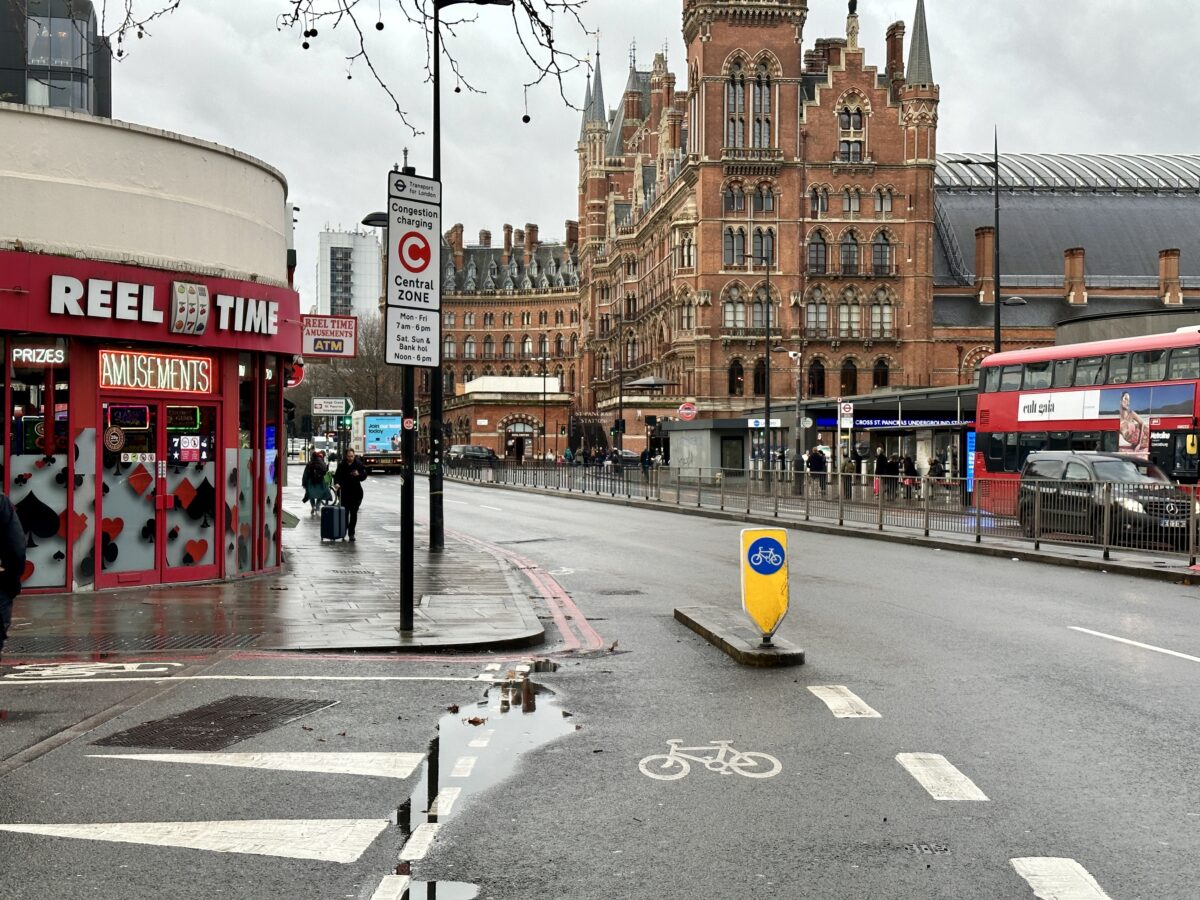
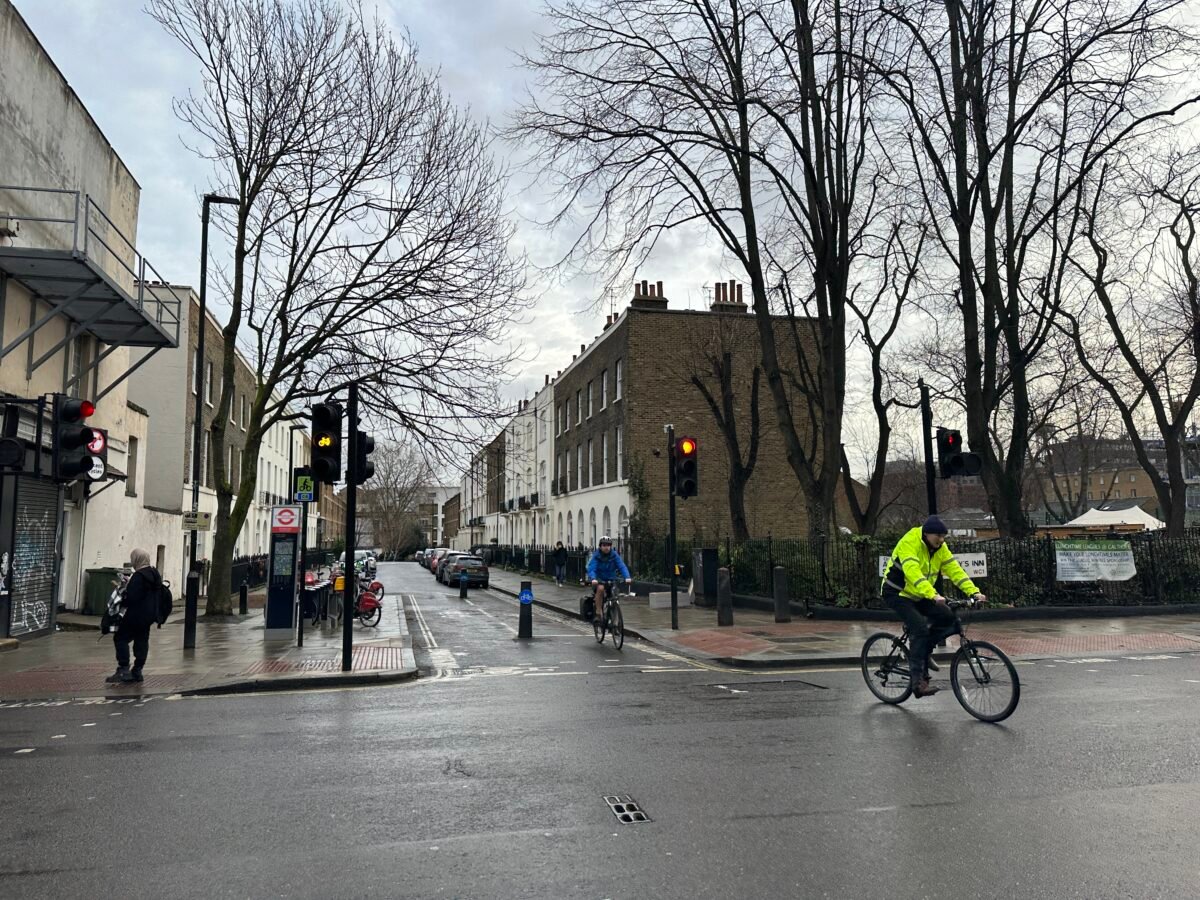
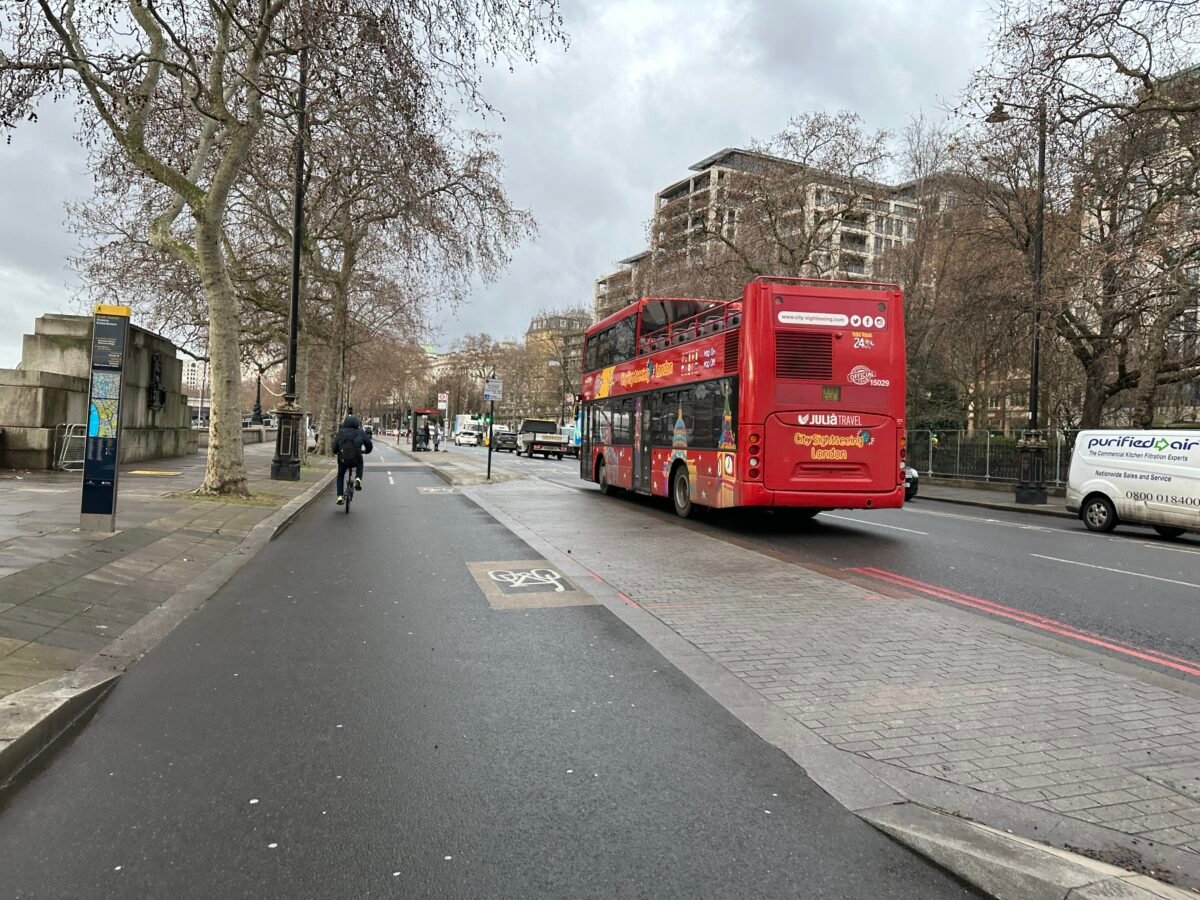
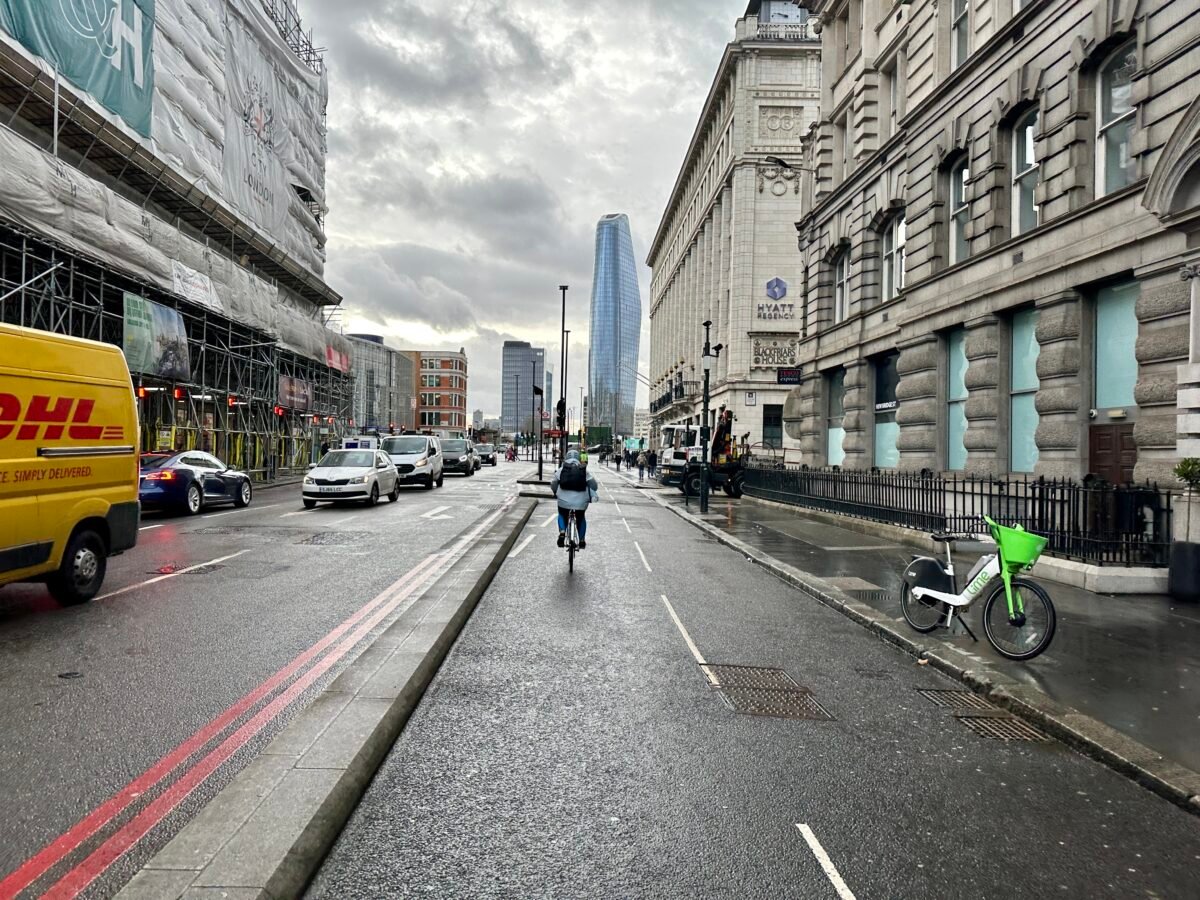
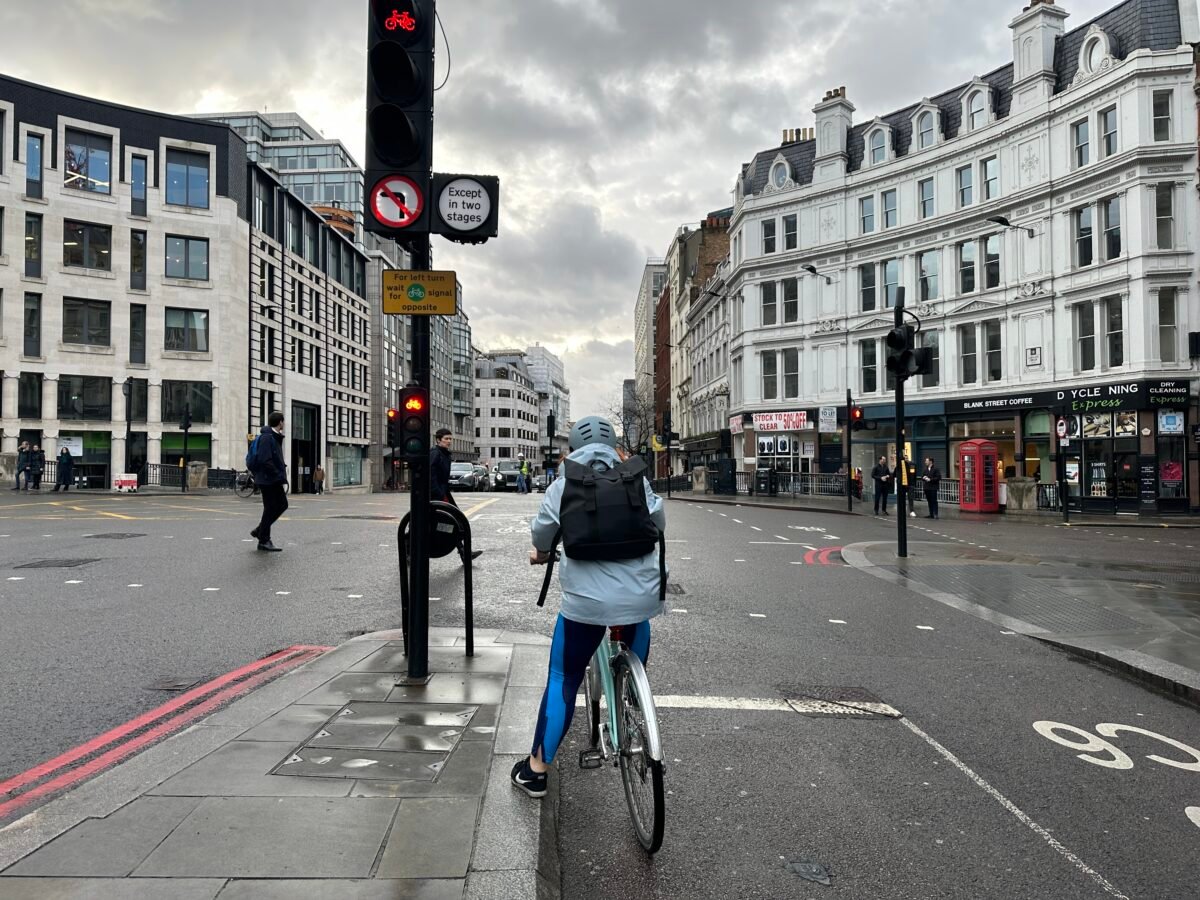
— This post is part of Taylor Griggs’ trip through Europe. See all stories here.
To be honest with you, I’ve never given a whole lot of thought to visiting London. I like coffee more than tea, I’ve never owned anything with Union Jack iconography and I am really not enticed by Royal weddings. But I added it to my European itinerary anyway, mainly because I found a cheap flight from Newark to Heathrow. And since I have long been intrigued by the idea of taking a high speed train under the English Channel from the United Kingdom to the European continent, it seemed like a quick layover in London would be a good chance to check that out.
As it turns out, I love London, and I wish I’d allotted for more than five hours to explore the city. I think my enthusiasm can be attributed in part to my low expectations, particularly regarding the city’s bike infrastructure: I went in knowing essentially nothing about London’s layout and whether or not it would be feasible for me to bike around at all during my brief visit.
In fact, I was blown away by the bike infrastructure in central London. I rented a Lime e-bike for a bit and was thrilled by the bikeways and all the people I saw riding bikes around the city. I found the design so easy and accommodating that I barely noticed the backwards traffic pattern (I still think it’s weird, though, and will be glad to return to the right side of the street).
Here are a few of the main things I noticed while biking around London:
Sophisticated wayfinding
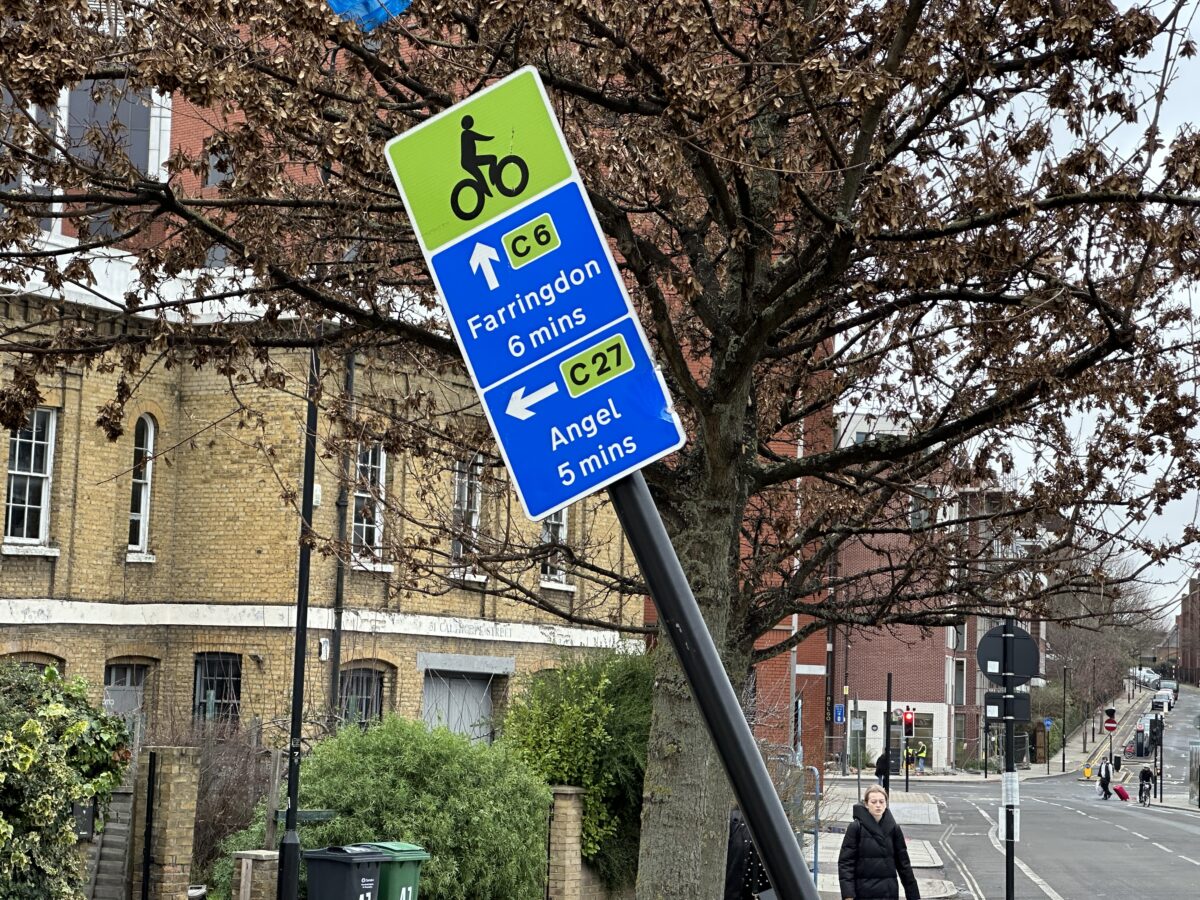
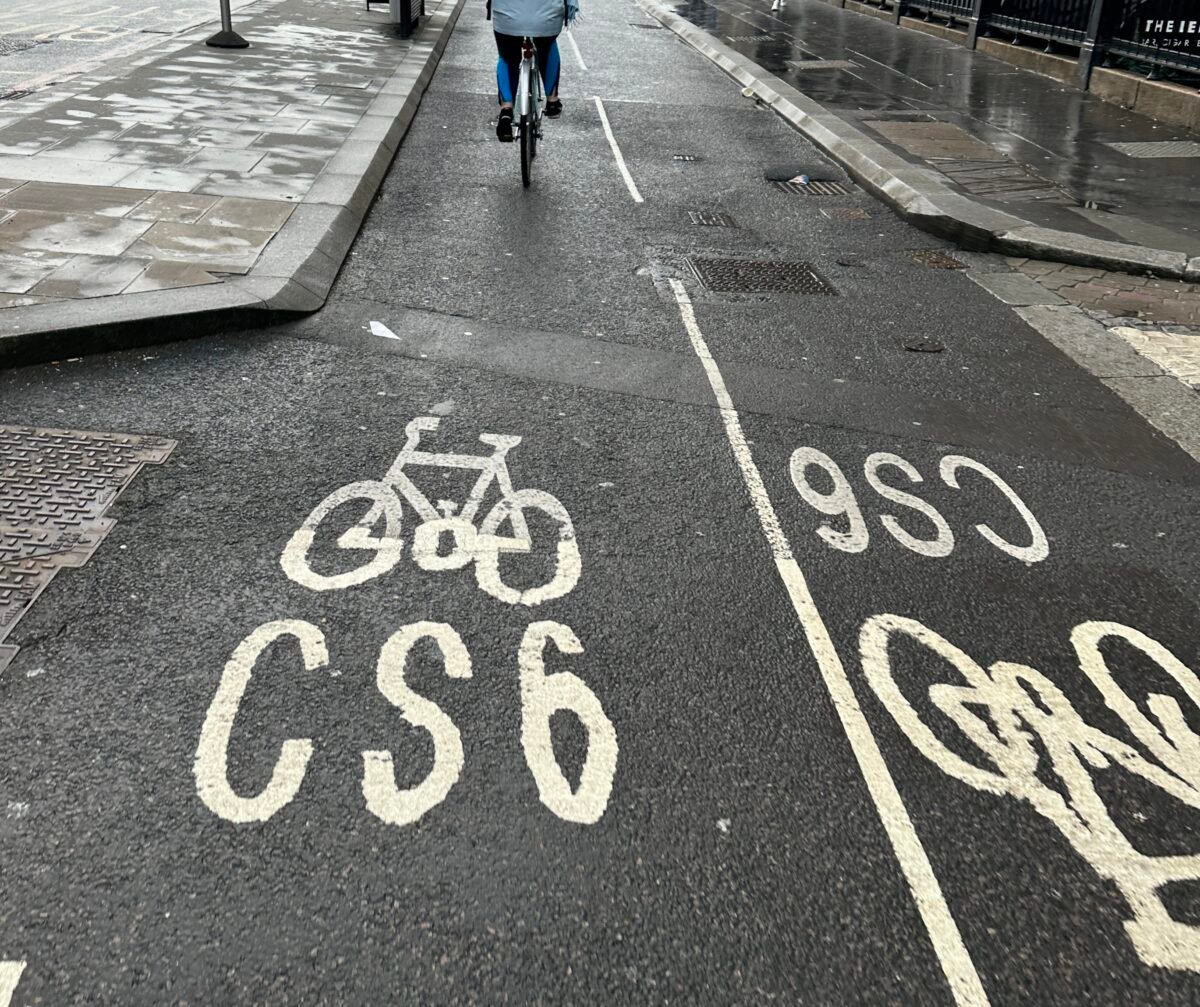
London’s bike networks (called cycleways) are each numbered. Street signs show where the cycleways can take you, and painted signs on the bikeways make it easy to keep track of where you are. (These are a few ideas Portland bike advocates and wayfinding enthusiasts want to see on our own greenways!)
Lots of couriers
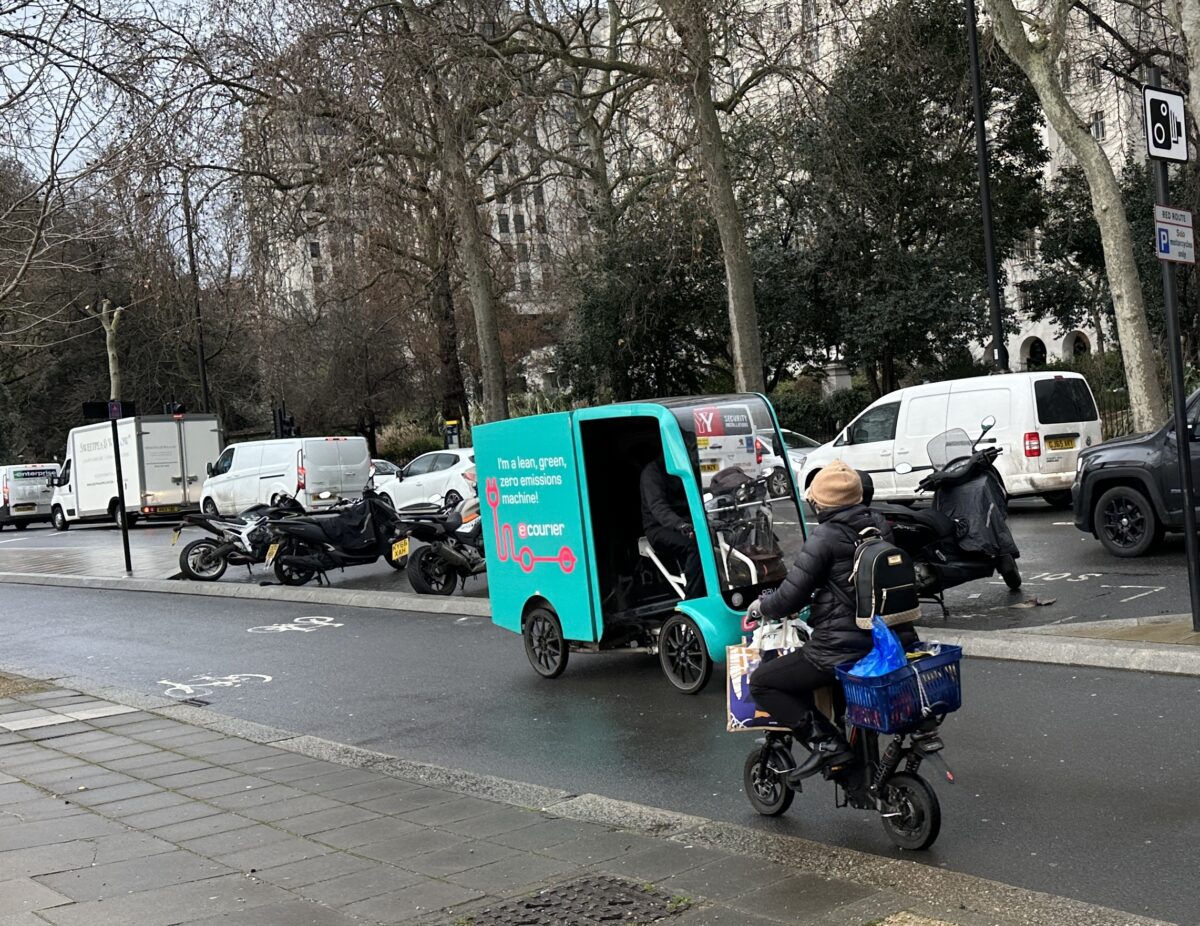


My observations about bike couriers and freight deserve their own post. But for now, just note that bike delivery is a thriving industry in London. And notably, the bike couriers seem to be treated with respect by the city’s designers, people riding regular bikes and even people driving cars/bigger freight vehicles. In New York, which was absolutely rich with bike and moped couriers, I noticed a lot more intermodal conflict.
Rental bikes galore
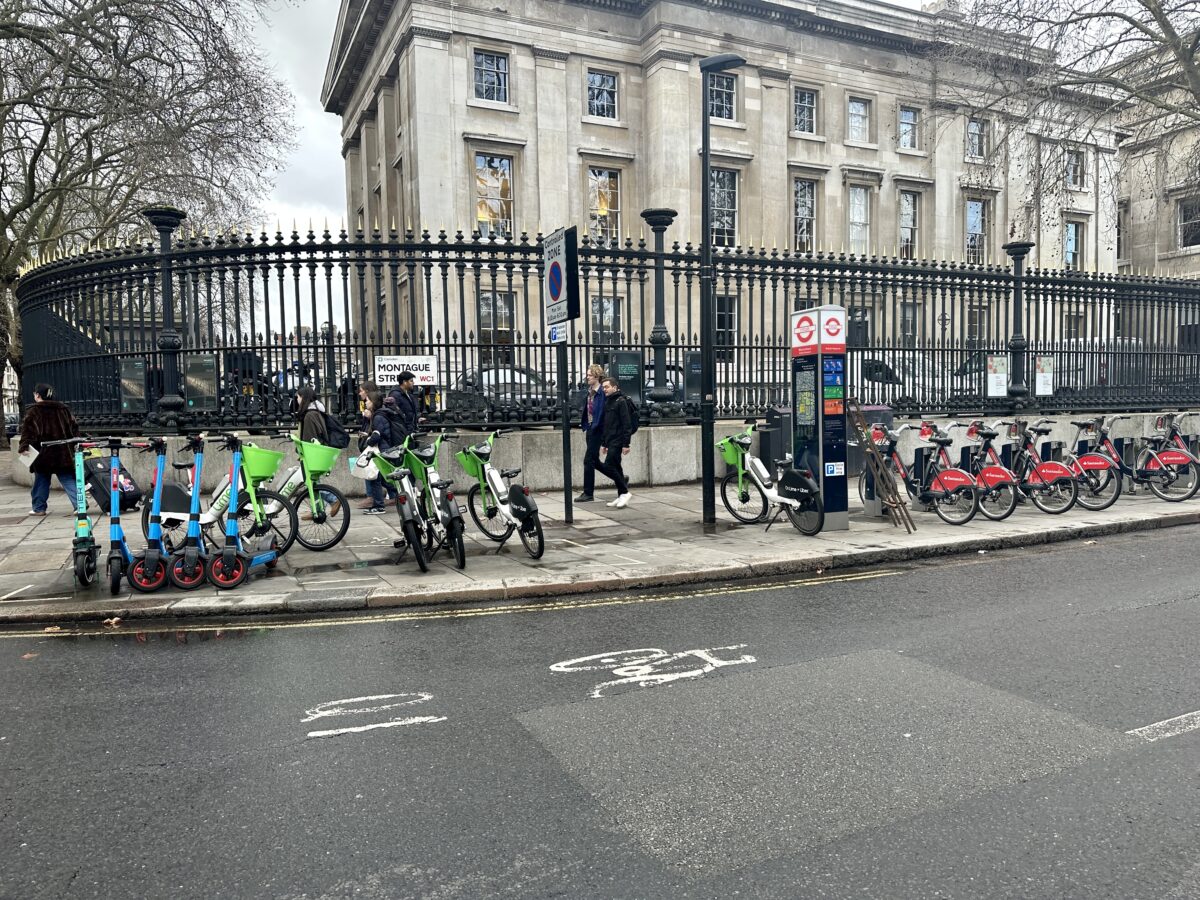
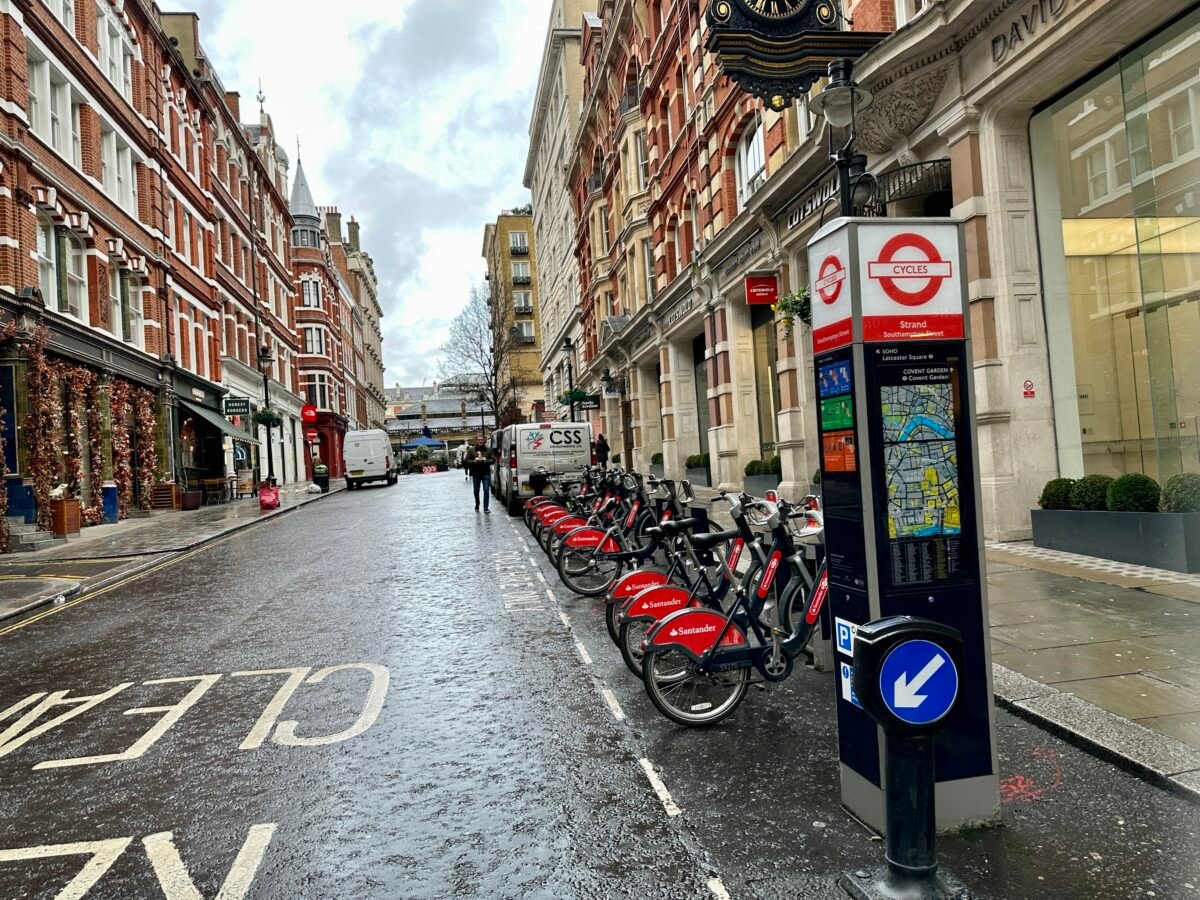
It’s clear that Lyft and Uber have taken over the e-bike rental market in cities around the world. However, London does things differently than what I’ve seen elsewhere (notably, Portland and New York). Even though Uber/Lime still operates a service in London, the city also appears to utilize a public bike share service as well, renting regular and electric bikes for more affordable prices than what the private companies charge. These bikes are part of London’s public transportation system and are marketed as such.
And as far as I could tell, the existence of this public service doesn’t mean the Lime bikes are left to rust. When I tried to rent an electric Citibike (operated by Lyft, same as Portland’s Biketown) in Brooklyn on Monday, so many of them were out of battery that I just gave up and rented a normal one. The Lime bike I rented in London was charged and worked on the first try. Plus, they have bigger baskets in the front and a place to hold your phone while you ride, which I am a huge fan of.
No unlicensed ice cream trading
’nuff said. (Just kidding. I have no idea what this means and I frankly don’t want to find out — some things should remain a mystery.)
Overall, I was highly impressed: I think London has some very special qualities that Portland would be wise to emulate in our planning. London hasn’t always been known as a cycling mecca in the past (and I’m sure there are areas outside of the central city that aren’t quite so easy to navigate), but I thought there were a lot of things to give them kudos for.



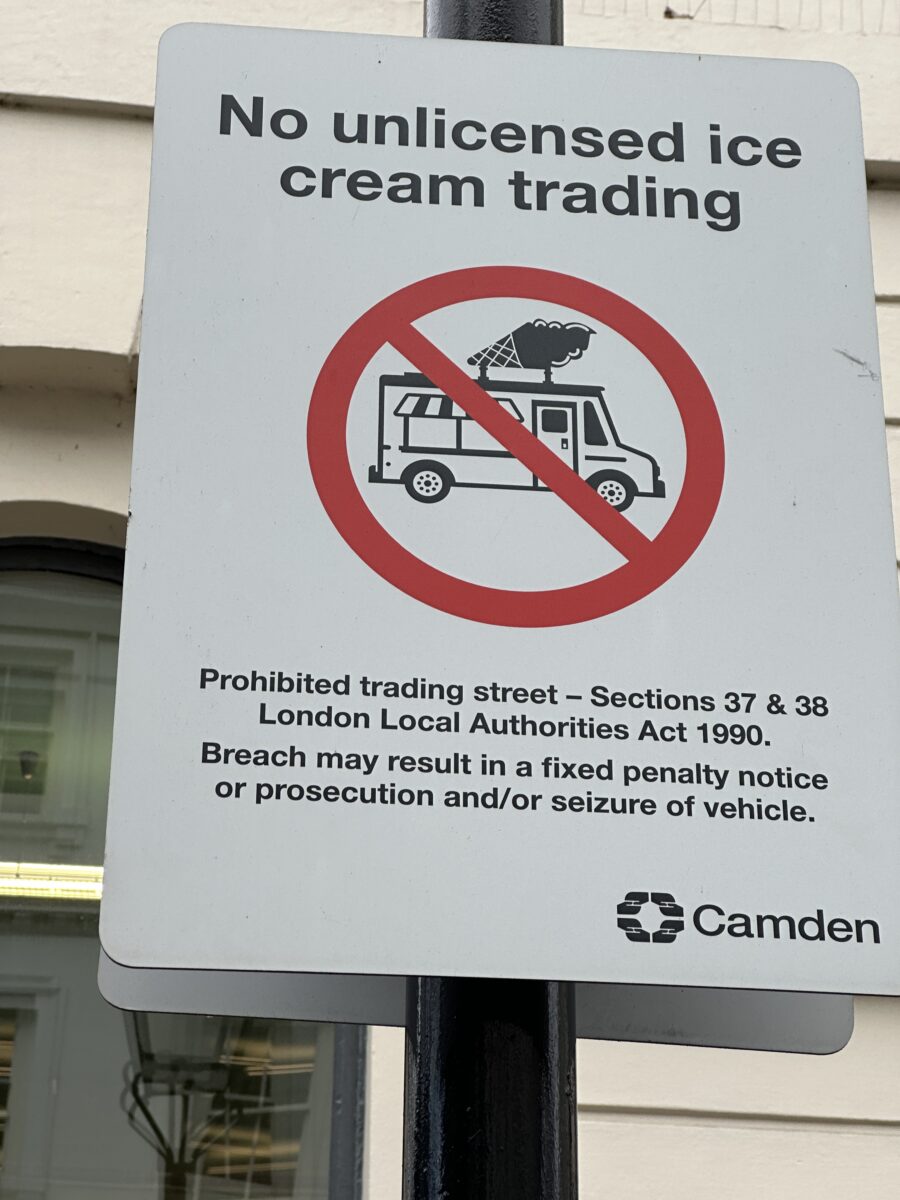


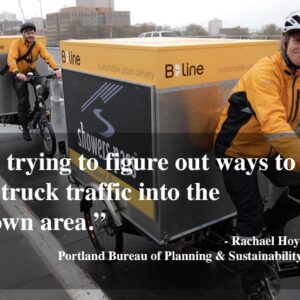
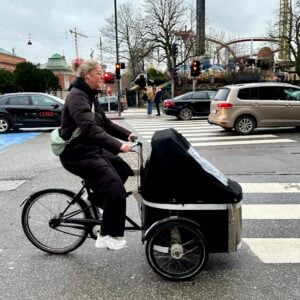
Thanks for reading.
BikePortland has served this community with independent community journalism since 2005. We rely on subscriptions from readers like you to survive. Your financial support is vital in keeping this valuable resource alive and well.
Please subscribe today to strengthen and expand our work.
London also keeps on expanding and enhancing their congestion and carbon pricing schemes. Meanwhile, Portland indefinitely punted on introducing congestion pricing (and has not seriously considered a carbon charge).
A carbon charge would kill off whatever is left of downtown, unfortunately. It works in London b/c there’s only one London, and it’s the capital city so people need to be there. Not so much in Portland.
If we followed London’s lead a carbon charge zone would not be limited to “downtown”. I also don’t care about the “survival” of downtown. In fact, the sooner the waves of bankruptcies occur, the better. At least we will eventually get some apartments out of all of those empty office buildings.
I spent a decent chunk of time reading about housing conversion of downtown office space this week after visiting downtown on a work day (not common for me these days). I only read about half a dozen articles, so I’m clearly no expert, but the consensus seemed to be that while it’s not a bad idea, it’s just absolutely not financially feasible and also is it seldom physically feasible (HVAC/plumbing, lots of interior spaces would be windowless, etc.)
The absolutism is telling.
“Feasibility” depends on just how much CRE in downtown Portland plummets. I expect I will be watching the Reis office vacancy index with real schadenfreude in 2023 and 2024. I’m hoping for something like the S&L crisis office CRE price crash but concentrated in west coast cities. And, of course, “feasibility” also depends on whether you can only imagine “market”-rate housing built by developers.
Ironically, it’s demonstrably “feasible” to convert office buildings into apartment buildings if governments gift developers with enough of the people’s money (e.g. TIF). Given Portland’s sordid history of public-private “urban renewal” this is the most likely scenario here.
https://www.costar.com/article/666325850/over-12-billion-in-office-to-residential-conversions-proposed-for-chicagos-lasalle-street-corridor
Well, the “absolutism” is me, I clearly wasn’t pulling a quote. But of course, Soren, as usual, you’re correct! You’re always right here. Sorry I said anything!
Hi PTB,
70% of new permits in Paris are for altering existing buildings (including parking garages)for new uses.
Anecdotally, NYC was constantly restructuring existing buildings for new uses.
It depends on how tight the commercial real estate market is. If done correctly it is better environmentally to repurpose existing buildings than to build new ones. But yeah, going from a square office building to housing has problems with getting enough windows, and water.
Why would you assume that more bankruptcies and vacancies will eventually result in more housing downtown? There are countless examples in the US where urban centers were hollowed out in a death spiral, and still haven’t recovered.
Cheap real estate isn’t enough to get housing built. People have to actually want to live there. And people don’t want to live next to vacant buildings, empty lots where former buildings once stood, etc.
The absolute horror of cheap land (and housing) prices.
That doesn’t seem to be helping livability and development in places like Detroit. Would you want to live in Detroit?
Absolutely.
Detroit is on my short list of two cities I’d move to in North America if I ever leave Portland. I’d probably rather leave this continent altogether if that happened though.
Agreed. Hopefully they spread to the land barons at OHSU and Legacy as well and deep into the Lloyd district.
Reporting on your first ride across the pond and no mention of the brake handedness? I’ll take that to underline the feeling of safety and comfort during your time spent riding. Looking forward to reading more of these 🙂
I grew up in portland & live in london but I find cycling here really stressful & drivers very hostile, though the protected cycleways and the ubiquity of bikeshare options are completely game changing. Here there’s only a very recent change to highway code that gives pedestrians the right of way at unmarked crossings, which shows you the entitlement drivers here feel to the roads! I would absolutely say things are moving in the right direction but i very often miss cycling on Portland’s greenways!
You might be interested in Bath, England’s pedestrian/Cycling FB group, Walk Ride Bath. They are where I learned about Kidical Mass rides, and they have something I’ve yet to experience here: a LARGE, active, passionate, engaged citizen community working with local government to try to shape a less car-centric cityscape. They’re not there, but they are trying, a lot, and there are so many average folks, but actively following government transportation programs, it’s inspiring to watch and read, compared to an average municipality here in the US.